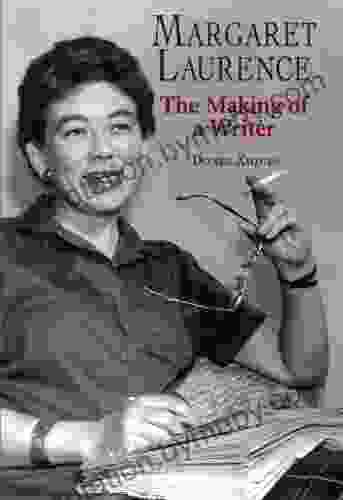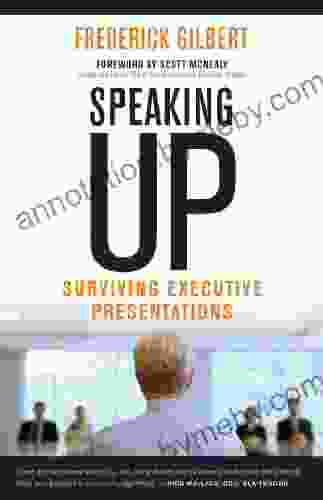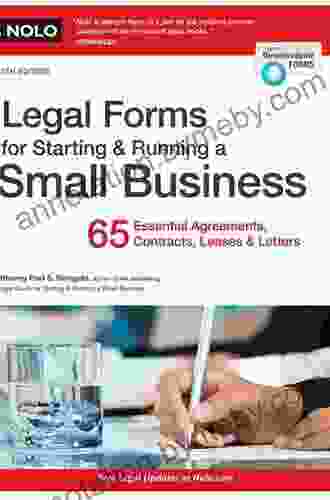Speaking Up: Surviving Executive Presentations

Executive presentations are a daunting task, even for experienced professionals. The stakes are high, and the pressure to succeed can be overwhelming. But with the right preparation and strategy, you can deliver a presentation that will impress your audience and achieve your desired results.
In this book, you will learn:
4.3 out of 5
| Language | : | English |
| File size | : | 7990 KB |
| Text-to-Speech | : | Enabled |
| Screen Reader | : | Supported |
| Enhanced typesetting | : | Enabled |
| Word Wise | : | Enabled |
| Print length | : | 217 pages |
| X-Ray for textbooks | : | Enabled |
- How to plan and prepare for an executive presentation
- How to structure your presentation for maximum impact
- How to deliver your presentation with confidence and clarity
- How to handle questions and objections
- How to follow up after your presentation
Whether you are a seasoned executive or a recent graduate, this book will provide you with the tools and techniques you need to succeed in your next executive presentation.
Table of Contents
- Planning and Preparation
- Structuring Your Presentation
- Delivering Your Presentation
- Handling Questions and Objections
- Following Up
Executive presentations are a powerful tool for communicating your ideas and influencing decisions. They can be used to persuade, inform, or inspire your audience. However, executive presentations can also be a daunting task. The stakes are high, and the pressure to succeed can be overwhelming.
But with the right preparation and strategy, you can deliver a presentation that will impress your audience and achieve your desired results.
Planning and Preparation
The first step in preparing for an executive presentation is to define your goals and objectives. What do you want to achieve with your presentation? Do you want to persuade your audience to make a decision, inform them about a new product or service, or inspire them to take action?
Once you have defined your goals, you can begin to develop your presentation content. Your content should be well-organized and easy to follow. It should also be relevant to your audience and their interests.
In addition to developing your content, you should also practice your delivery. This will help you to become more confident and comfortable in front of an audience.
Structuring Your Presentation
The structure of your presentation will depend on your goals and objectives. However, there are some general guidelines that you can follow.
Your presentation should begin with a strong . This should grab your audience's attention and make them want to learn more. You should also state your main thesis statement in your .
The body of your presentation should be divided into several sections. Each section should focus on a different aspect of your topic. You should use clear and concise language in your body sections.
Your presentation should conclude with a strong summary. This summary should restate your main thesis statement and leave your audience with a lasting impression.
Delivering Your Presentation
When you deliver your presentation, it is important to be confident and enthusiastic. You should also make eye contact with your audience and speak clearly and slowly.
It is also important to be prepared to handle questions and objections. If someone asks a question that you cannot answer, be honest and say that you will get back to them with an answer. If someone objects to your point of view, be respectful and try to find common ground.
Handling Questions and Objections
One of the most challenging aspects of executive presentations is handling questions and objections. However, with the right preparation, you can handle these challenges with ease.
Here are some tips for handling questions and objections:
- Be prepared for questions. Anticipate the questions that your audience might ask and prepare your answers in advance.
- Be respectful. When someone asks a question or objects to your point of view, be respectful and listen to their concerns.
- Be honest. If you do not know the answer to a question, be honest and say that you will get back to them with an answer.
- Be persuasive. If someone objects to your point of view, try to find common ground and persuade them to see your side of things.
Following Up
After you have delivered your presentation, it is important to follow up with your audience. This will help you to reinforce your message and build relationships.
Here are some tips for following up after your presentation:
- Send a thank-you note to your audience. Thank them for their time and attention.
- Provide additional resources. If you have any additional resources that would be helpful to your audience, provide them with links or contact information.
- Stay in touch. Keep in touch with your audience via email or social media. This will help you to build relationships and generate future opportunities.
Executive presentations are a powerful tool for communicating your ideas and influencing decisions. However, they can also be a daunting task. With the right preparation and strategy, you can deliver a presentation that will impress your audience and achieve your desired results.
This book has provided you with the tools and techniques you need to succeed in your next executive presentation. By following the advice in this book, you can plan and prepare your presentation, deliver it with confidence and clarity, and handle questions and objections with ease. You can also follow up with your audience after your presentation to reinforce your message and build relationships.
With the right preparation, you can deliver an executive presentation that will help you to achieve your goals and objectives.
4.3 out of 5
| Language | : | English |
| File size | : | 7990 KB |
| Text-to-Speech | : | Enabled |
| Screen Reader | : | Supported |
| Enhanced typesetting | : | Enabled |
| Word Wise | : | Enabled |
| Print length | : | 217 pages |
| X-Ray for textbooks | : | Enabled |
Do you want to contribute by writing guest posts on this blog?
Please contact us and send us a resume of previous articles that you have written.
 Book
Book Novel
Novel Page
Page Chapter
Chapter Text
Text Story
Story Genre
Genre Reader
Reader Library
Library Paperback
Paperback E-book
E-book Magazine
Magazine Newspaper
Newspaper Paragraph
Paragraph Sentence
Sentence Bookmark
Bookmark Shelf
Shelf Glossary
Glossary Bibliography
Bibliography Foreword
Foreword Preface
Preface Synopsis
Synopsis Annotation
Annotation Footnote
Footnote Manuscript
Manuscript Scroll
Scroll Codex
Codex Tome
Tome Bestseller
Bestseller Classics
Classics Library card
Library card Narrative
Narrative Biography
Biography Autobiography
Autobiography Memoir
Memoir Reference
Reference Encyclopedia
Encyclopedia M C Henry
M C Henry Denis Dragovic
Denis Dragovic Dervla Murphy
Dervla Murphy Dom Joly
Dom Joly Jonathan Gottschall
Jonathan Gottschall Devin Devasquez
Devin Devasquez Dinah Dye
Dinah Dye Leokadia Schmidt
Leokadia Schmidt Donald Kasen
Donald Kasen James Humberstone
James Humberstone Debra Dixon
Debra Dixon Michael Stewart
Michael Stewart Dolly Parton
Dolly Parton Denise Shull
Denise Shull Mark W Gaither
Mark W Gaither Mithu Sengupta
Mithu Sengupta Scott D Smith
Scott D Smith Denise Lai Chua
Denise Lai Chua Inga Aksamit
Inga Aksamit Donald C Kelly
Donald C Kelly
Light bulbAdvertise smarter! Our strategic ad space ensures maximum exposure. Reserve your spot today!

 Cruz SimmonsGMC Goal Motivation and Conflict: The Ultimate Guide to Achieving Your Dreams...
Cruz SimmonsGMC Goal Motivation and Conflict: The Ultimate Guide to Achieving Your Dreams...
 William FaulknerWho Was Fred Rogers: The Man Behind the Neighborhood We All Know and Love
William FaulknerWho Was Fred Rogers: The Man Behind the Neighborhood We All Know and Love Ryan FosterFollow ·16.7k
Ryan FosterFollow ·16.7k Tyler NelsonFollow ·4.6k
Tyler NelsonFollow ·4.6k Gordon CoxFollow ·19.9k
Gordon CoxFollow ·19.9k Ralph EllisonFollow ·14.2k
Ralph EllisonFollow ·14.2k Steve CarterFollow ·8.9k
Steve CarterFollow ·8.9k Junichiro TanizakiFollow ·16.6k
Junichiro TanizakiFollow ·16.6k Israel BellFollow ·9.5k
Israel BellFollow ·9.5k E.E. CummingsFollow ·16.3k
E.E. CummingsFollow ·16.3k

 Cruz Simmons
Cruz SimmonsGuide To Pencak Silat Kuntao And Traditional Weapons:...
Immerse yourself in the captivating world of...

 Dalton Foster
Dalton FosterUnlock Your Financial Freedom: Dive into the ABCs of Real...
Are you ready to embark on a...

 George Orwell
George OrwellThe Advanced Guide to Real Estate Investing: Your...
Are you ready to embark on...

 Will Ward
Will WardMargaret Laurence: The Making of a Writer
Margaret Laurence (1926-1987) was one of...

 Jorge Amado
Jorge AmadoThe ABCs of Property Management: A Comprehensive Guide...
Owning and managing rental...
4.3 out of 5
| Language | : | English |
| File size | : | 7990 KB |
| Text-to-Speech | : | Enabled |
| Screen Reader | : | Supported |
| Enhanced typesetting | : | Enabled |
| Word Wise | : | Enabled |
| Print length | : | 217 pages |
| X-Ray for textbooks | : | Enabled |










